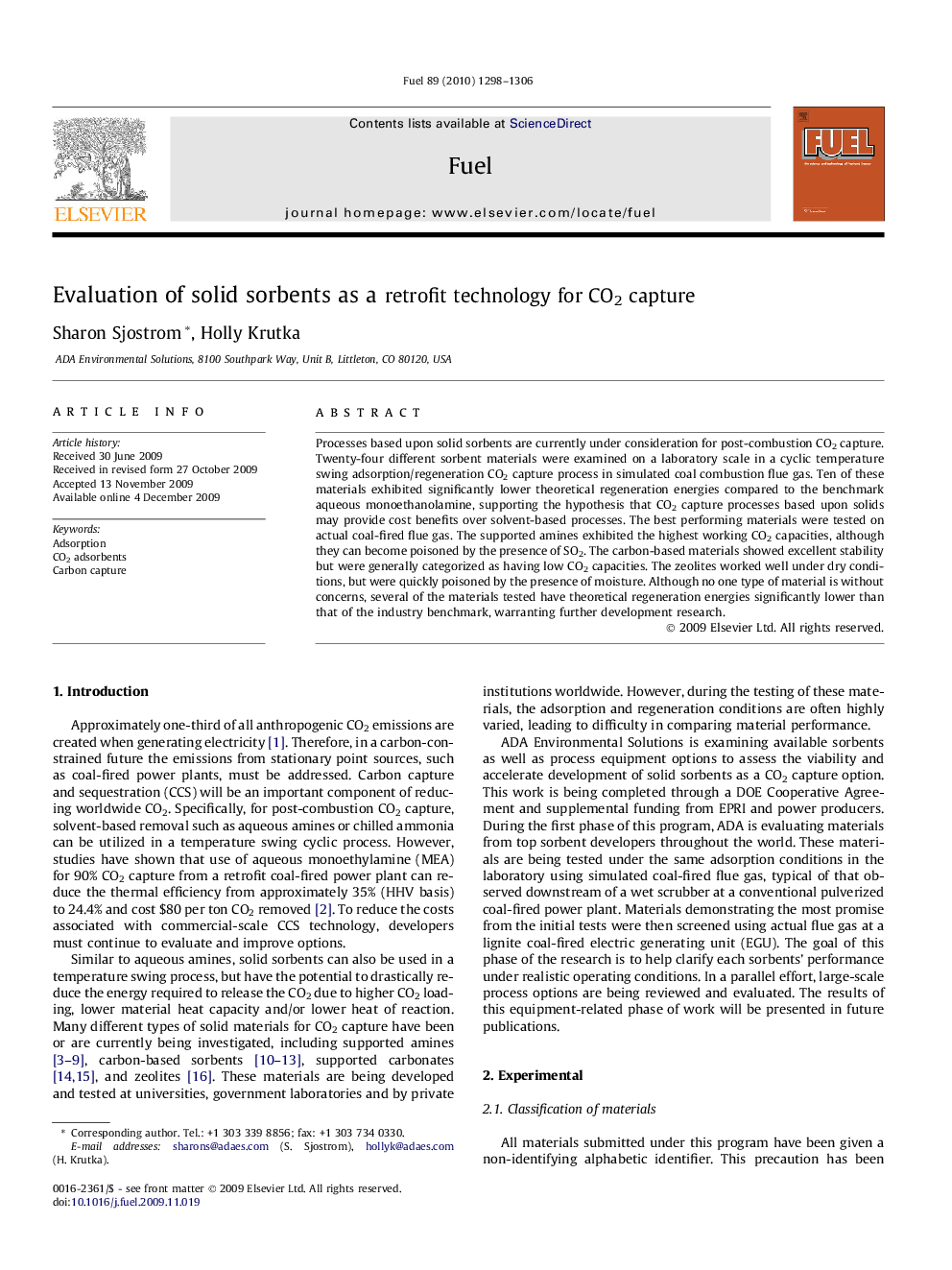| Article ID | Journal | Published Year | Pages | File Type |
|---|---|---|---|---|
| 207246 | Fuel | 2010 | 9 Pages |
Processes based upon solid sorbents are currently under consideration for post-combustion CO2 capture. Twenty-four different sorbent materials were examined on a laboratory scale in a cyclic temperature swing adsorption/regeneration CO2 capture process in simulated coal combustion flue gas. Ten of these materials exhibited significantly lower theoretical regeneration energies compared to the benchmark aqueous monoethanolamine, supporting the hypothesis that CO2 capture processes based upon solids may provide cost benefits over solvent-based processes. The best performing materials were tested on actual coal-fired flue gas. The supported amines exhibited the highest working CO2 capacities, although they can become poisoned by the presence of SO2. The carbon-based materials showed excellent stability but were generally categorized as having low CO2 capacities. The zeolites worked well under dry conditions, but were quickly poisoned by the presence of moisture. Although no one type of material is without concerns, several of the materials tested have theoretical regeneration energies significantly lower than that of the industry benchmark, warranting further development research.
